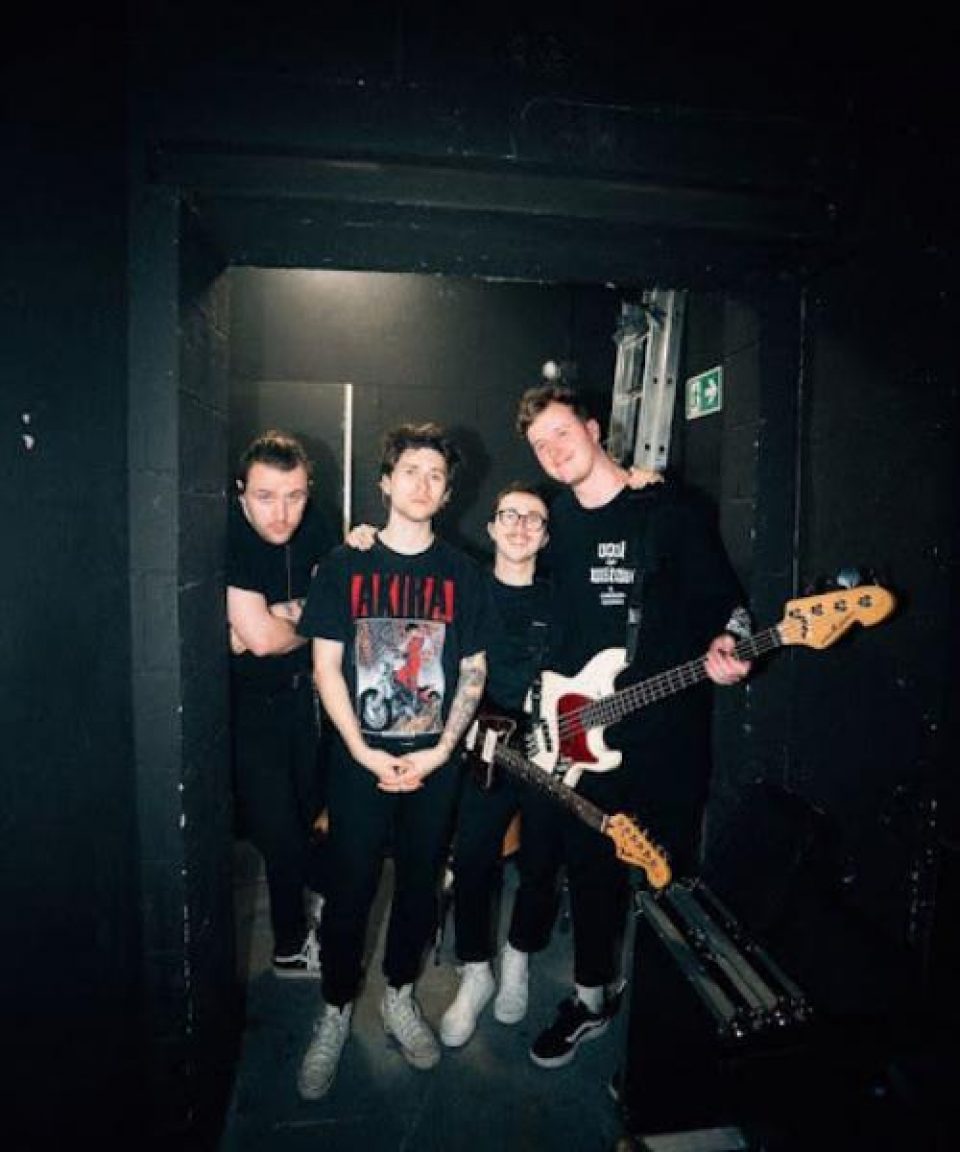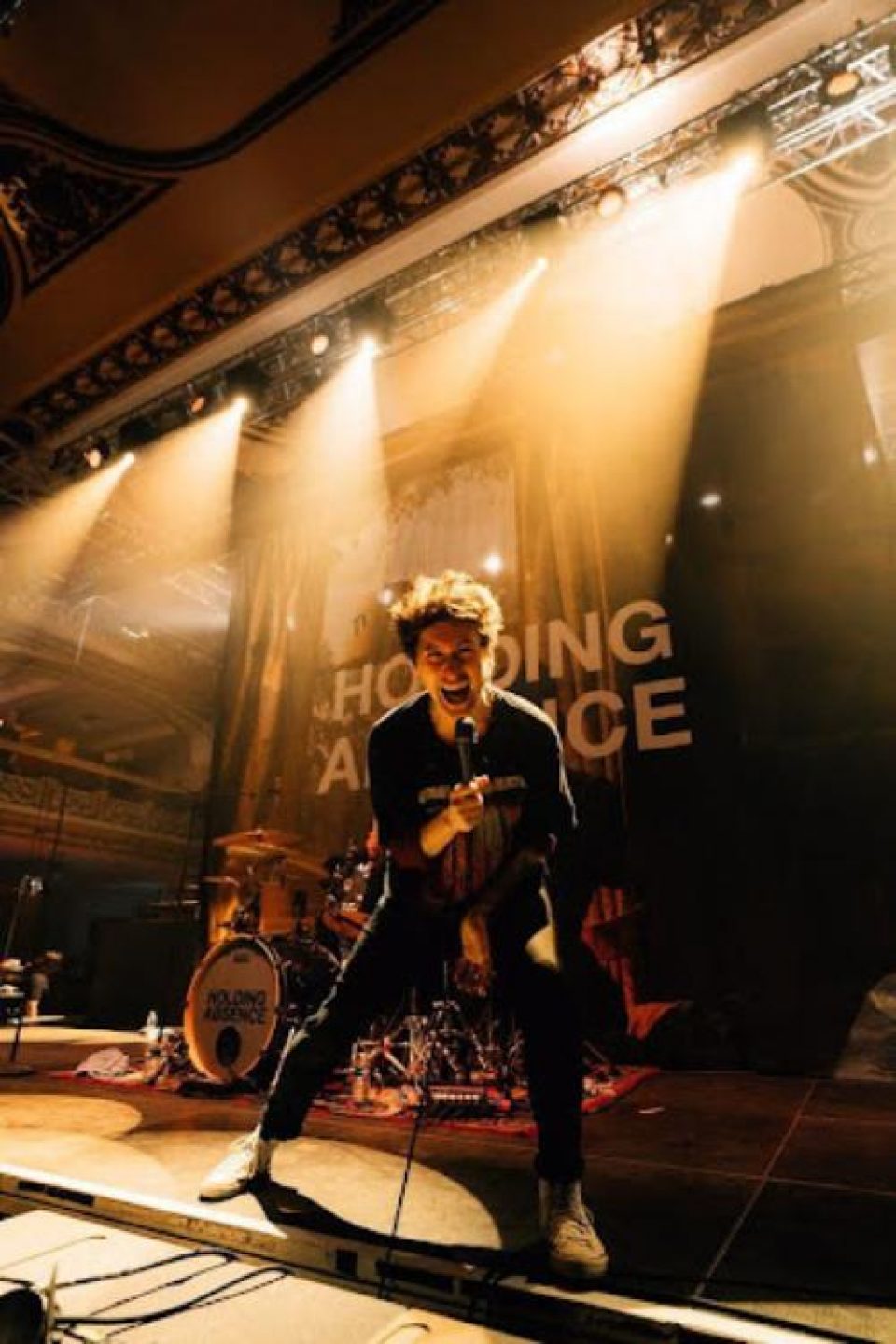By Samira Hussein—
The COVID-19 pandemic brought the world to a complete standstill in early 2020, leaving numerous industries and people to grapple with the unprecedented global aftereffects. Live music was severely impacted by pandemic restrictions intended to curb the spread of the virus, with artists, touring crews, promoters, merchandisers, and venues struck by financial difficulties without a clear view on when pre-pandemic ‘normalcy’ would return. Within six months of lockdown, Canada’s independent music scene saw a sharp decrease in revenue to the tune of $233 million CAD, while the live music scene experienced a brutal seventy-nine percent loss in income from 2019. These challenges were not unique to Canada as similar reports sprung from the US, UK, and Europe, necessitating financial support from governments as well as industry giants like Live Nation Entertainment, Universal Music Group, and Spotify. For many musicians, it became apparent that a familiar lifeline — merchandise — would be vital to staying afloat even as restrictions lifted and touring resumed. As environmental consciousness increased amongst the public due to the pandemic, it also became apparent that the current economic state of the music industry is not conducive to sustainability, with standard touring practices such as venue cuts potentially providing a disincentive for artists to adopt more eco-friendly practices.
Billion Dollar Industry: Merchandise and Fan Engagement
Prior to the pandemic, music merchandise was an already fast-growing industry with an estimated worth of $3.5 billion USD in 2018. Artists like Taylor Swift and Travis Scott are able to rake in upwards $1 million USD in merch sales over the course of just a few arena gigs, with the former anticipated by Forbes to potentially reach half a billion following the conclusion of The Eras Tour. From basic t-shirts to hoodies, tote bags, hats, jewellery, and more, the creative possibilities for merch are seemingly endless as the industry becomes more entwined with mainstream and luxury fashion. For many artists, however, merchandise sales are not just an additional stream of income.
The meteoric rise of digital streaming has been criticized for how artists are compensated. It’s estimated that under one percent of musicians are capable of surviving off of their income from streams, with revenue from around twelve-thousand streams considered the equivalent of one t-shirt sale. Most of an artist’s revenue thus comes from touring, and the hefty costs associated with touring is typically offset by the income musicians earn from merchandise sales, allowing them to balance their budgets while promoting. Reflecting on when COVID-19 restrictions put a stop to touring, Eddie Berg — vocalist and violinist of Swedish metalcore band Imminence — said: “Merchandise has been extremely important to us, especially during the pandemic since this was our only stable income during that time. If we didn’t run our shop independently, I don’t know how we could’ve survived financially as a band or company.”
 Swedish metalcore band Imminence
Swedish metalcore band Imminence
This is echoed by many artists in the alternative and indie music scenes, along with recognition of not just the material importance of merchandise, but the fans who are buying. In the book Stitched Up: The Anti-Capitalist Book of Fashion, author Tansy Hoskins writes that fashion is dependent on items of clothing being valued for more than just its use-value, but its symbolic-value (think: nostalgia, love, community). It’s thus easy to understand how fans are inclined to spend more money in support of their favourite artists, even far away from concert venues and in-person interactions. By investing in the creative process and collaborating with artists to develop unique designs reflective of the music, the symbolic-value of merchandise is reinforced.
On how the landscape around fan engagement has evolved since lockdown, Berg said: “We definitely came closer to our fans as a result of the pandemic. We didn’t have tours anymore where we could meet our fans, and so we had to turn to the internet for fulfilling that […] connection. Extending to merchandise, I could see that the more thought and care we put into our brand, that would translate directly to our fans in the form of appreciation and trust.” When posed this same question, Lucas Woodland — vocalist of Welsh alternative rock outfit Holding Absence — seemed to share this view: “I think post-pandemic life has made obvious changes on both sides of the industry, in the sense that the consumers are more grateful, and the creators are more grateful, too! I believe everything is happening twofold right now because of our deprivation from this passionate industry. Merch demand very much falls in line with this philosophy. People don’t just simply attend shows anymore, there’s definitely a jubilant want to support your favourite band through the buying of merch… And as a musician, the reaction is that you’re more inspired to make cool stuff, as people are more eager to buy it!”
 Welsh alternative rock band Holding Absence
Welsh alternative rock band Holding Absence
The Ethics of Merch Production
The garment industry is no stranger to reproach on the grounds of ethical and ecological ramifications, much of which disproportionately places harm on our most vulnerable communities, especially those in the Global South. The UN Environment Program (UNEP) recognizes this sector as being extremely resource intensive, wasteful, and largely dependent on the continued use of fossil fuels. It’s estimated that the fashion industry contributes anywhere between two to eight percent of our global CO2 emissions, further complicated by issues with labour and human rights violations. Despite this, over three hundred million people globally are dependent on and employed across the sector, and unsurprisingly, artists selling merchandise should be included in this figure.
Consumers have become alienated from the production of commodities. It’s essential to remember fashion cannot be separated from human labour, as an entire chain of people are involved in the process that are inherently deserving of value. This is not possible, however, when the (predominantly female) workforce is frequently denied fair wages, healthcare, trade unions, and are forced to work long hours in unsafe conditions. Garment workers are severely underpaid for their labour, with only about one to three percent of the total cost of a clothing article accounting for their wages. According to Hoskins, “there is enough money in the industry for the entire workforce to be reasonably paid and fairly treated if only profits were reinvested and priorities realigned.”
Alongside the human cost of fashion, the environmental cost must also be considered. It’s estimated that one-fifth of global wastewater is due to the toxic chemicals used for textile dyeing, with poor regulation failing to prevent contamination from leaks and dumping. Fashion is also considered the second-largest consumer of water resources, with a single cotton t-shirt utilizing seven-hundred gallons of water in production. Additionally, since cheap synthetic fibres (like polyester, nylon, acrylic) are effectively nonbiodegradable, it’s estimated that we contribute thirty-five percent of the ocean’s microplastics. Further, the laundry cycle is unable to prevent the spreading of microfilaments to our waterways. Though there is limited research on the long-term effects of microplastic exposure in humans, recent animal studies suggest they’re capable of crossing the blood-brain barrier within two hours of exposure. This is particularly concerning as the existing body of literature suggests neurological conditions are among the potential risks of exposure.
These issues are further compounded with the advent of ‘fast-fashion,’ a retail style where clothing is designed, produced, distributed, and advertised at a low price and quick pace, encouraging consumer participation in fast-moving trends. As sales reach two hundred billion units per year, the lifecycle and usage of most clothing items has actually decreased by nearly forty percent. Many environmental activists consider the concept of ethical fashion to be contradictory under our current economic system, which encourages profit at any cost over people. However, this isn’t to say that we shouldn’t strive to do better, especially when merch often constitutes seventy percent of an artist’s revenue. In response to if there needs to be greater sustainability awareness and advocacy within the community, Woodland said: “I DO believe artists should be aware of the fast-fashion aspect of our industry. Our industry churns out millions of basic shirts a year, so it’s our duty to be on top of that. As I mentioned earlier, us and several other bands aim for earth-positive clothing, and I believe that is something that will only become more and more prevalent as time goes by.”
 Lucas Woodland, lead singer of Holding Absence
Lucas Woodland, lead singer of Holding Absence
It’s estimated that the design stage is where eighty percent of an item’s impact is decided, which leaves opportunity to prioritize consultations with experts to reduce harm and waste. This is in line with UN Sustainable Development Goal 12: Responsible Consumption and Production, highlighting the need to drastically improve the sustainability of our production and consumption habits. Using organic cotton and recycled materials, for example, is better than using regular cotton as water consumption, soil erosion, and chemical usage is reduced. “As with everything, together we are strong. If more artists and brands start choosing sustainable options for our environment as well as for human rights, the demand for this standard will grow.” Berg said.
Imminence say they are taking a stand on how artists should approach merchandise production, sharing details regarding their supplier, materials, as well as shipping and packaging on their website. Approaching merch production with a sustainability mindset, however, is not always easy… or cheap. For artists already struggling to get by, the difference in a sustainable supplier versus a standard one can make or break them financially. “In our case, with a sustainable approach to merchandise in the form of using exclusively fair trade and organic garments, while trying to not overcharge the fans … our margins are smaller than if we would turn to cheaper alternatives.” Berg admitted. These margins that touring artists have to contend with only get smaller when the prevalent issue of venue commissions is factored in, a practice deemed by many as exploitative and disastrous for the community— and arguably, the environment.
 Eddie Berg, vocalist and violinist of Imminence
Eddie Berg, vocalist and violinist of Imminence
Death by a Thousand Cuts: Venue Commissions
Merchandise selling fees (which can range between fifteen to fifty percent) have been a touring industry standard that artists have begun speaking out against. In defence of concessions, some argue that venues are also recovering from pandemic financial losses, and merch cuts allow them to pay their staff, address maintenance issues, and provide space for artists to sell. But between the rising cost of living and inflation, the additional expenses of touring are often too significant, with many artists having to cancel due to nonviability. “Merch cuts are a universally loathed practice. We hate it, our fans hate it… Even the people who collect the cuts themselves are often sheepish when asking.” Woodland explained. “I’d say we’re in quite a unique position with merch cuts, as we’re too big to avoid them, but small enough to really feel the negative effects of them, too. A merch cut can often be the difference between a nights-fuel or a few hotels, which is obviously vital to a band of our size.” Berg summed the issue up quite concisely: “To be honest, the whole financial system of touring is not encouraging bands to choose sustainable alternatives. When bands are struggling to make the budget work, they will try to keep down the costs wherever they can. Taking merchandise cuts directly impacts bands’ options on sustainability and quality.”
Interestingly enough, the experience of venue cuts — while universally disliked — seems to vary by location. While Woodland considers Europe progressive in this regard, Berg observed that venues in Europe have been enforcing cuts more frequently post-pandemic. As Imminence embarked on their first North American run in November 2023, however, Berg found upholding the band’s sustainability standards a lot more challenging: “In Europe, we’re used to a lot of different alternatives that are 100% organic, which seemed more difficult in the US. There weren’t many options and the production costs were substantially higher compared to the EU. We tried keeping the merchandise prices as close as possible between the shows in North America, but had to raise the prices when merchandise cuts were enforced by the venue.” The additional research and production costs associated with selling sustainable merch can easily become a deterrent to many, especially when hefty cuts pinch the pockets of both the band and the fans at the merch stand. Comparing North American venues with those in the UK, Woodland keyed in that “the biggest difference is competency and efficiency. Sadly, the UK is way more efficient with merch cuts, but on the upside, they happen less frequently. In America/Canada, 4 out of 5 venues will charge a merch cut… but they will not count your merch pre-show, they will not man your merch for you, and – transparently – are quite easy to lie to about your takings. And then, in the UK, 1 in 5 venues will charge a merch cut… but they WILL count your merch pre-show, they WILL man your merch for you, and they WILL take the accurate percentage of cut. It’s very much a ‘pick your poison’ type of problem. Would you rather less venues work for their cash, and therefore take (almost) a well-earned cut… Or more venues be lazy and similarly easy to lie to? Most musicians will tell you that the answer is neither.”
 Holding Absence
Holding Absence
In September 2023, Live Nation announced the ‘On The Road Again’ program, aiming to financially support touring musicians in the US. The objective was to eliminate selling fees at clubs across the country, donate millions to crews and developing artists, as well as provide performers with up to $1500 USD per show for expenses. Though many were wary of the potential implications of this generosity, Woodland emphasized the difference it’s already made for Holding Absence on the road. “To be completely transparent, the Live Nation change has been absolutely huge for our band! It has saved us thousands, and they even give you vouchers for gas. So, as it stands, it’s all thumbs-up from us right now. But, that being said, we – and most other musicians in the industry – can feel the shadow of Live Nation looming over us, and are wondering why they’re being so charitable. It all feels a bit unnerving. Live Nation has a monopoly over the music industry, and it’s very out of character for them to be doing this.” Berg also cued in on this sceptical reception despite considering the idea to fundamentally be good: “From what I’ve heard, the ’On The Road Again’ program from Live Nation would actually only last until the end of 2023. Which, if that’s the case, seems like a big publicity stunt to gain favour in the eyes of the public and among bands.” There has been little additional information provided by Live Nation regarding the full timeline of the program amidst growing concerns that independent venues will be harmed as artists receive incentives for booking with Live Nation-owned venues. Still, many independent venues are now declaring themselves commission-free, such as through the 100% Venues directory in the UK launched by the Featured Artists Coalition, as well as the FAC’s collaboration with the Union of Musicians and Allied Workers for the #MyMerch campaign in North America.
 Imminence
Imminence
Towards A Sustainable Future
Unsurprisingly, the current state of the music industry is rough. Artists are more reliant than ever on the revenue from merchandise as physical sales decline and streaming services fail to provide adequate compensation, even as we grapple with material overproduction that is bleeding both workers and the planet dry. Exploitative practices, such as substantial selling fees that eat away at an artist’s livelihood, only perpetuate the cycle in which musicians become over reliant on the material consumption of garments to continue creating their art. Woodland said it best: “I think I speak for everybody when I say that merch should never leave the hands of the artist. Our industry is crowded, and the musicians are generally the least-respected in our workplace. Despite being the bedrock of creativity and performance – the reason any profit is there to be made – we usually have to bend to the whims of labels, agents and managers. If venues – who already charge venue rental and make a killing on the bar every night – try to take a bite of the only sacred pie we have left, there quite simply won’t be any music left to be made.”
The best way to guarantee further social and environmental catastrophe is if nothing changes. There’s a dire need for the restructuring of industry practices to not only incentivize and support sustainable merchandising, but to also ensure artists are fairly compensated so that the dependency on merch is reduced. There had once been a desire to return to pre-pandemic ‘normalcy,’ although it is clear now that the only way is forward. Continued dialogue amongst artists, fans, venues, and other relevant stakeholders can not only decrease the industry’s social and environmental costs, but also strengthen the community’s response and resiliency for similar challenges in the future.

